Xiaomi presents new electric saloon SU7
Xiaomi’s debut model is a saloon around 5 metres long, which will be available with either 220 kW rear-wheel drive or 495 kW all-wheel drive. The abbreviation “SU” in the model name stands for “Speed Ultra”: the acceleration from 0 to 100 km/h should be possible in 2.78 seconds thanks to high aerodynamics (Cd value: 0.195). Xiaomi puts the peak torque at 838 Nm and the top speed at 265 km/h. According to earlier information, the engines are to come from United Automotive Electronic Systems and the China-based company Suzhou Inovance Automotive.
After initially planning to reveal the vehicle by the end of 2023, some key data on the new model had emerged in mid-November 2023 from the application for approval from the Chinese Ministry of Industry and Information Technology (MIIT). For example, the kerb weight of 1.98 or 2.2 tonnes, depending on the engine, and a length of 4,997 mm. Xiaomi now gives the width as 1,963 mm and the height as 1,455 mm. The wheelbase is exactly three metres.
The vehicle has an 800-volt system architecture. The rear-wheel-drive version of the SU7 is powered by an LFP battery from BYD with a capacity of 73.6 kWh, while the all-wheel drive version is equipped with an NMC battery from CATL with 101.5 kWh. The latter is the so-called Qilin battery from CATL, i.e. the latest generation of the manufacturer’s cell-to-pack technology. At the pack level, the battery should achieve a volume-related utilisation efficiency of 72 per cent, according to CATL. With the first generation of cell-to-pack technology (CtP), this was still 50 per cent. In other words, more cells can be installed in the same installation space for a greater range.
In the twin-engine version of the SU7, this should allow for a range of 800 kilometres, according to the Chinese standard. The Qilin battery can be charged “in 5 minutes for a range of 220 kilometres and in 15 minutes for a range of 510 kilometres”, according to Xiaomi.
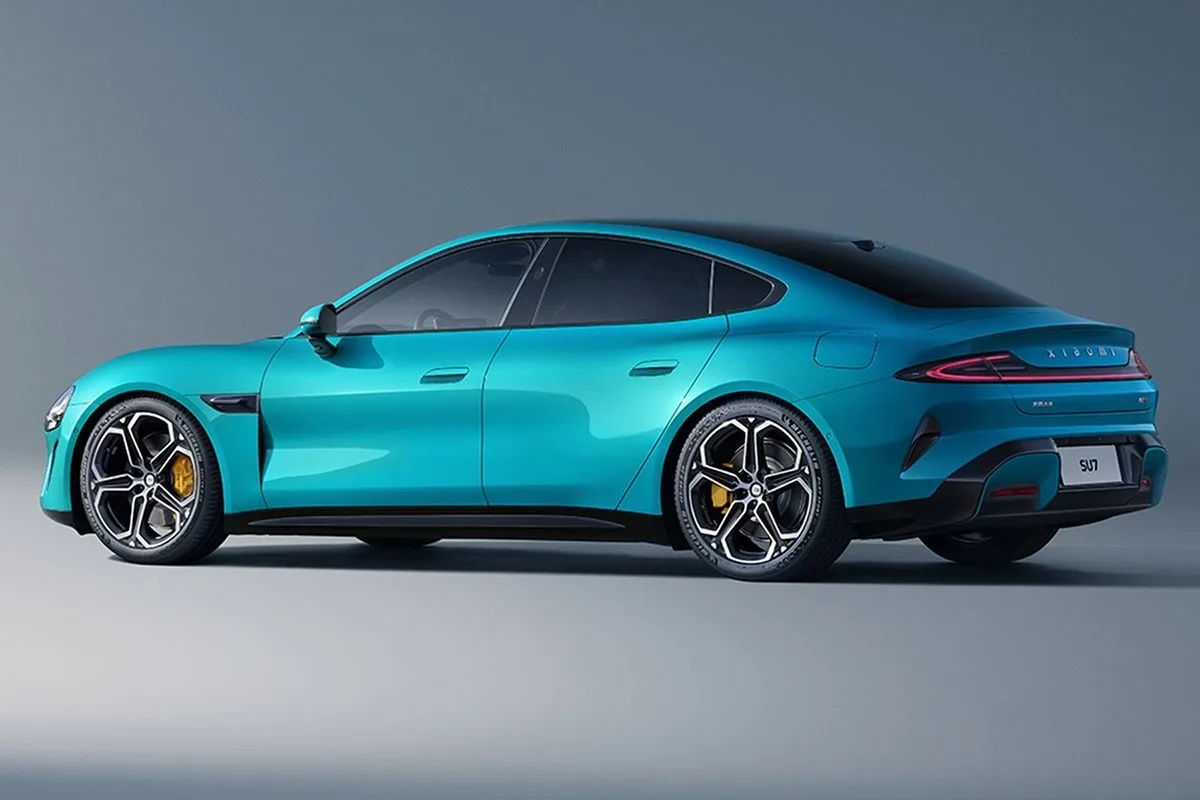
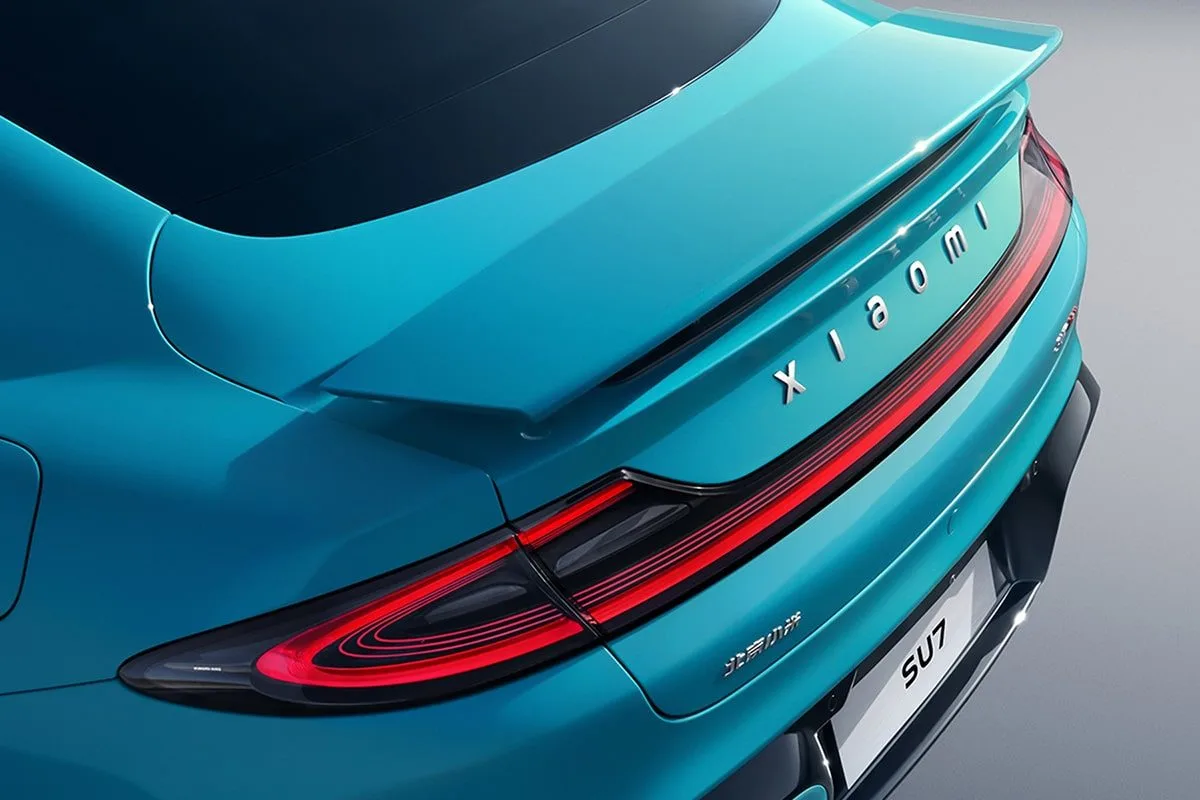
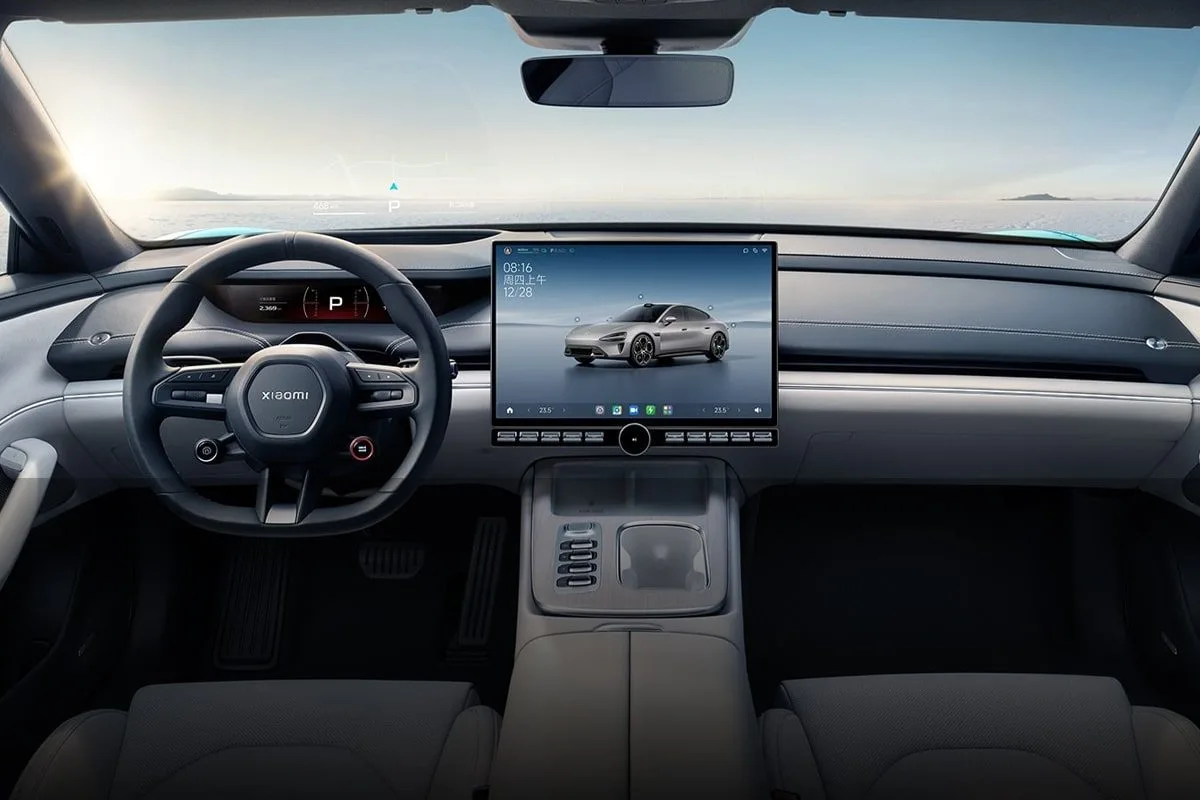
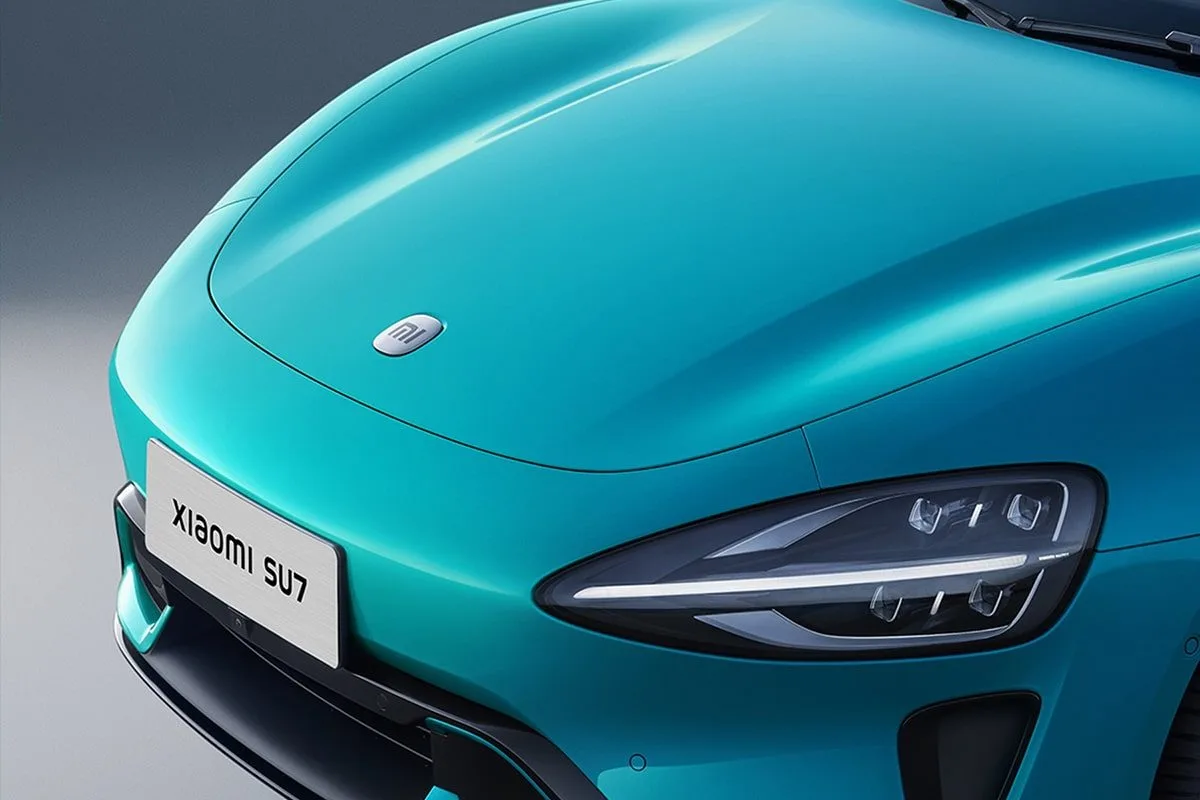
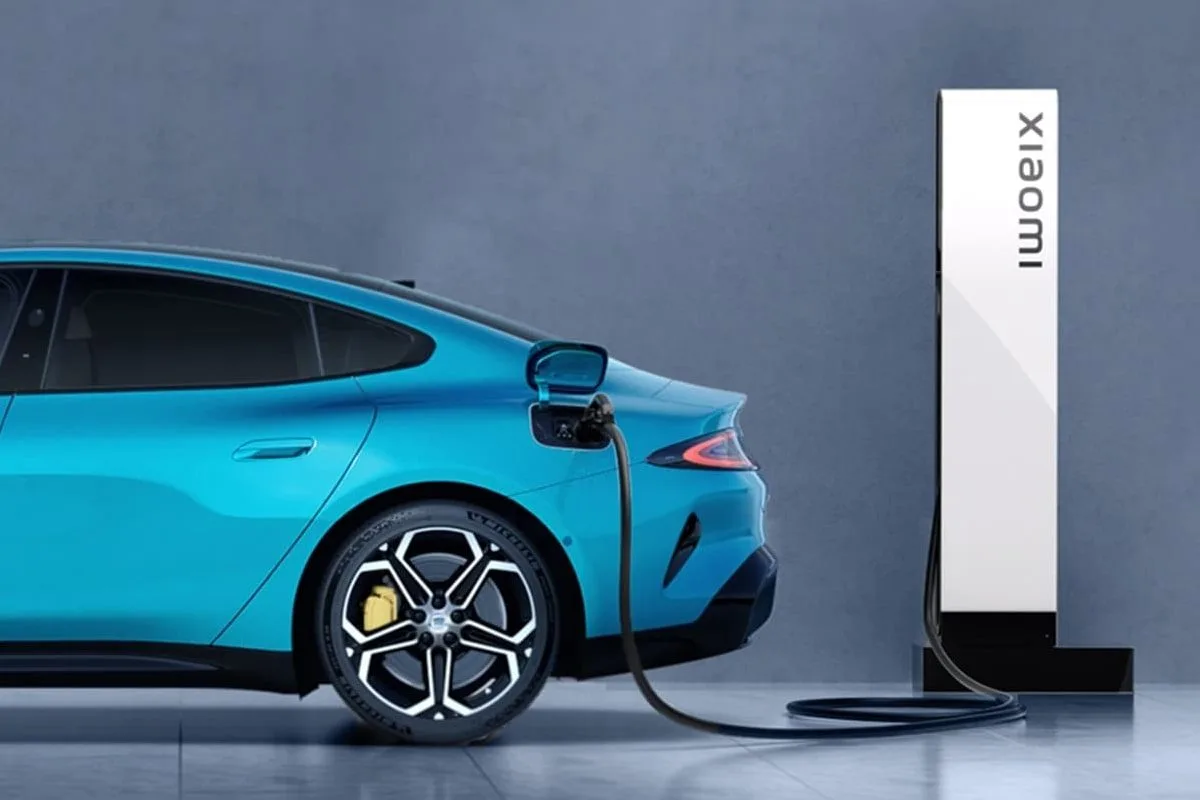
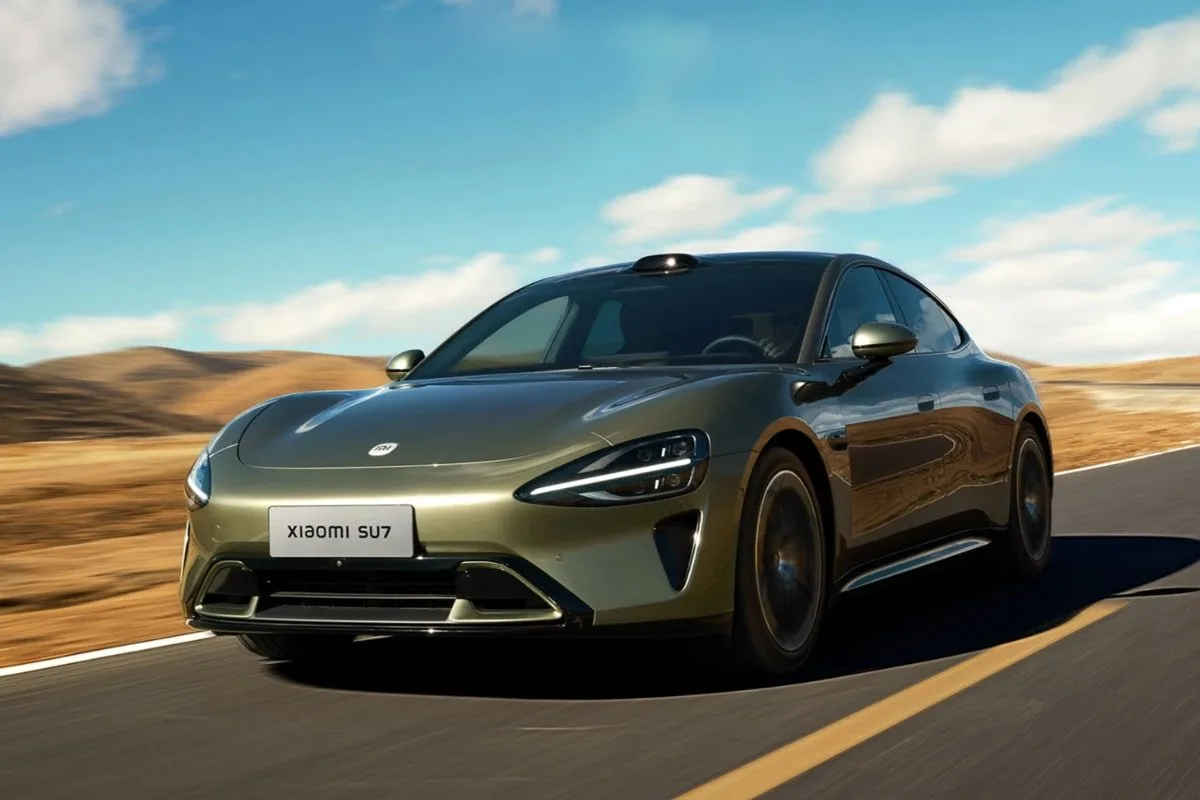
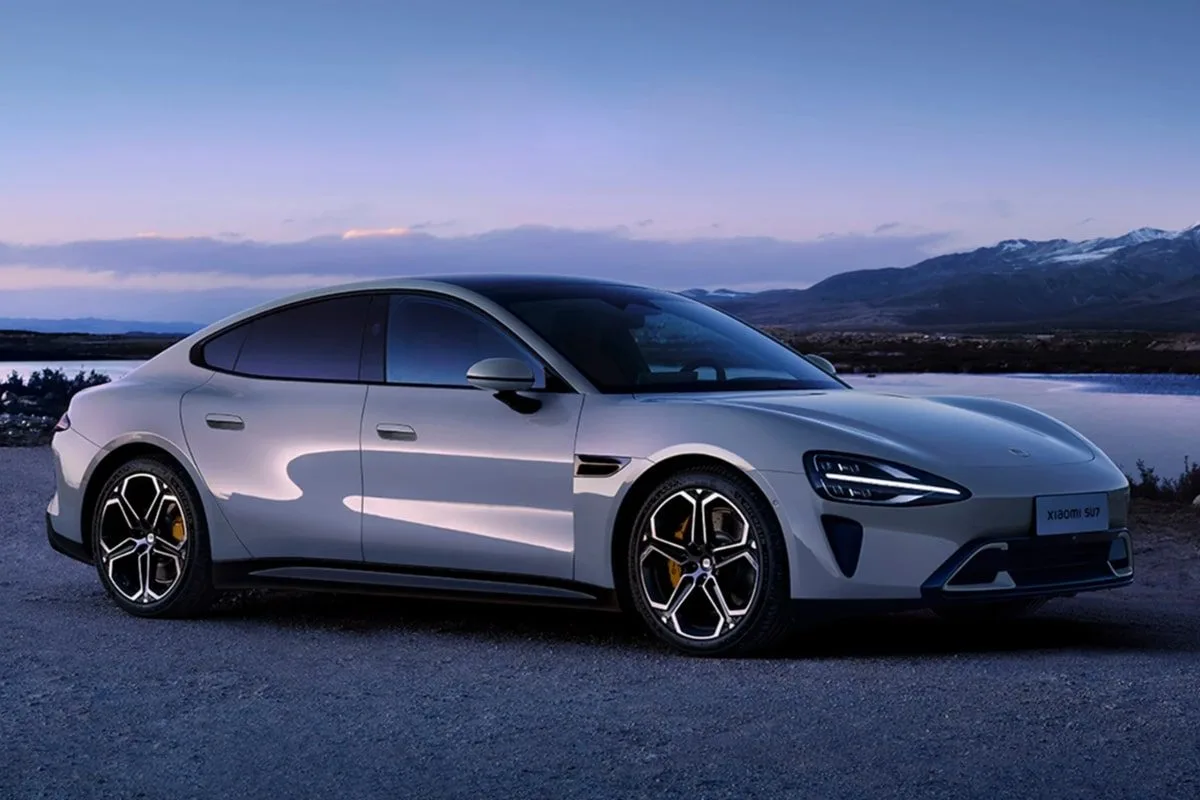
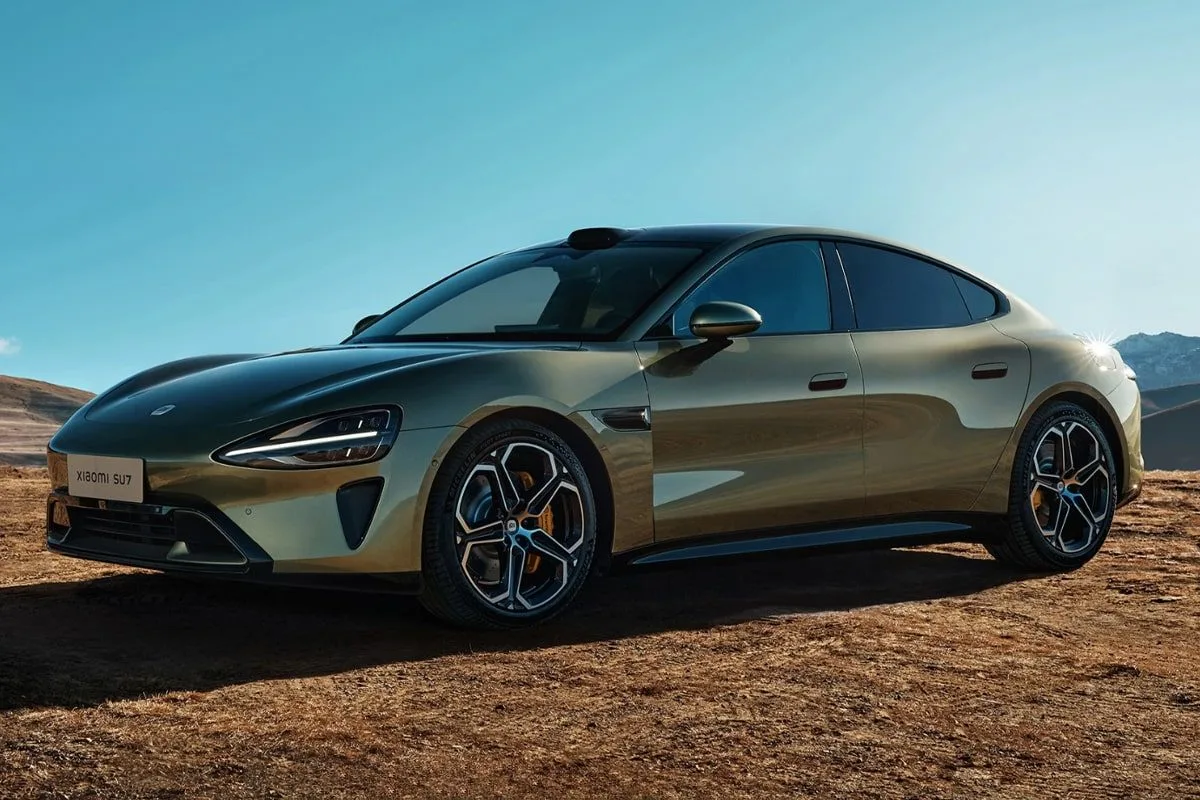
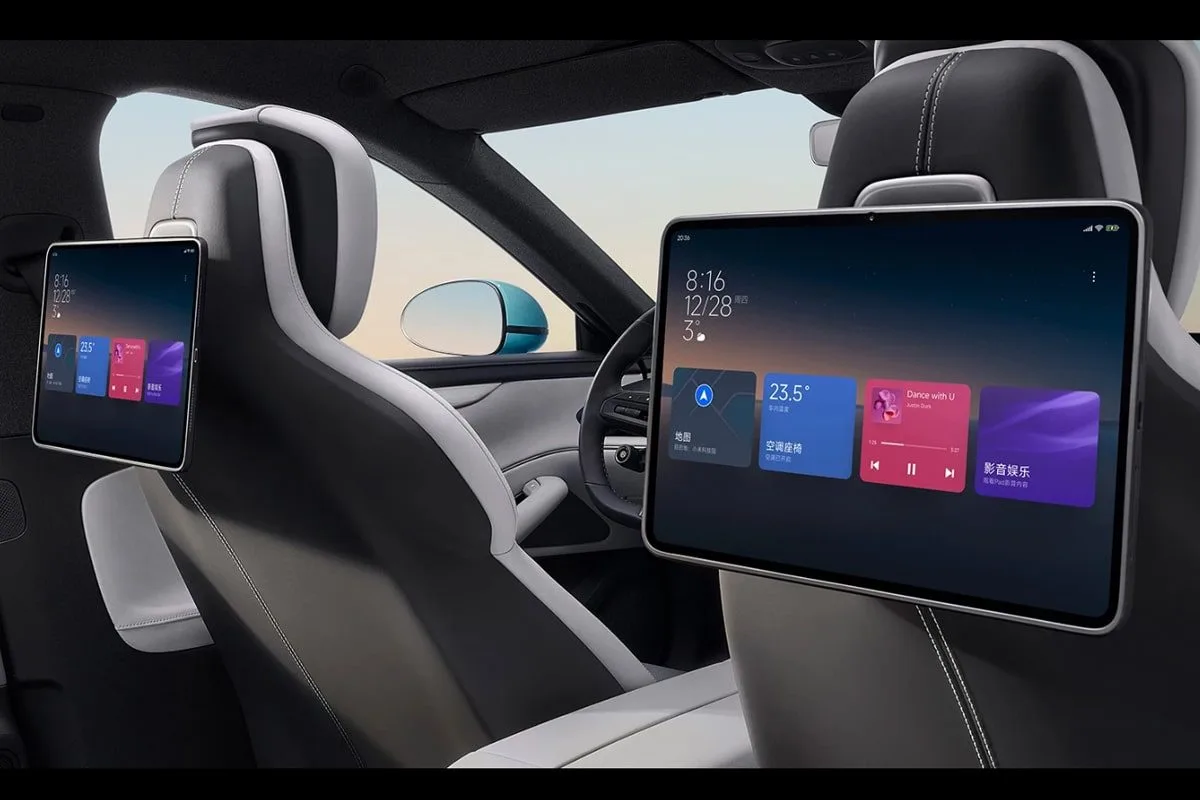
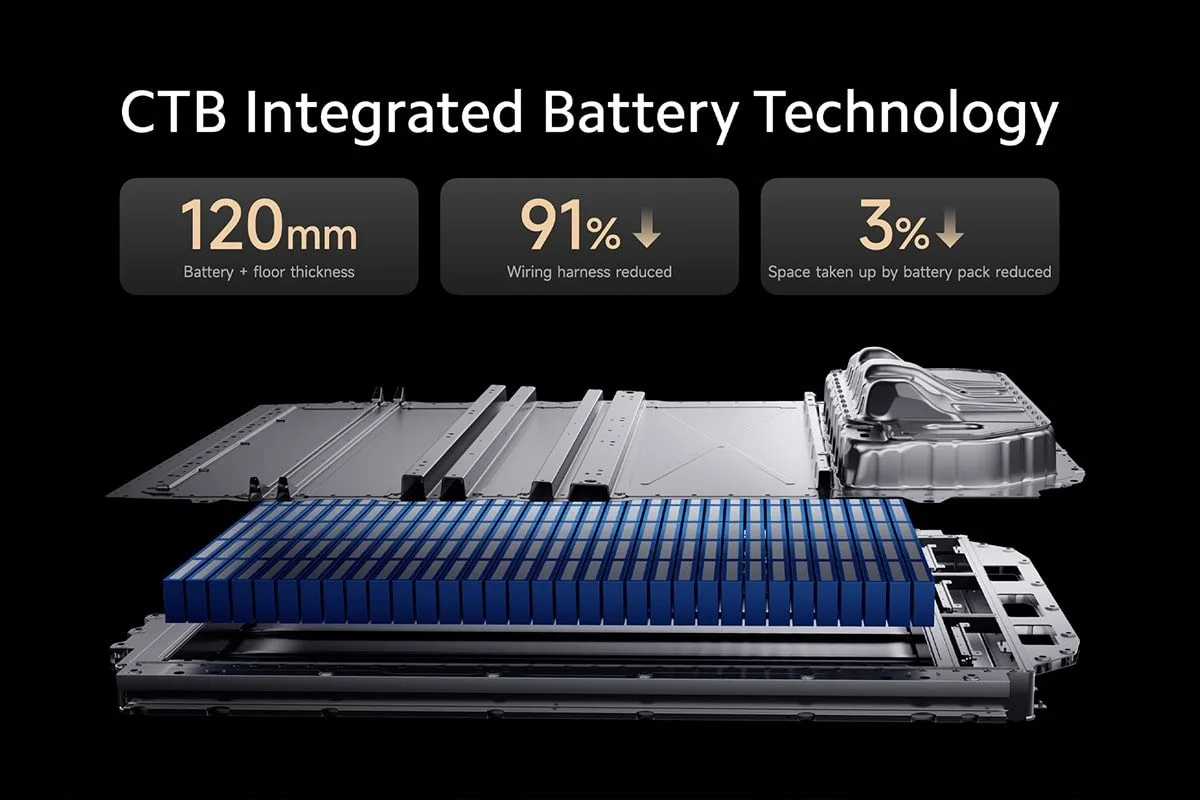
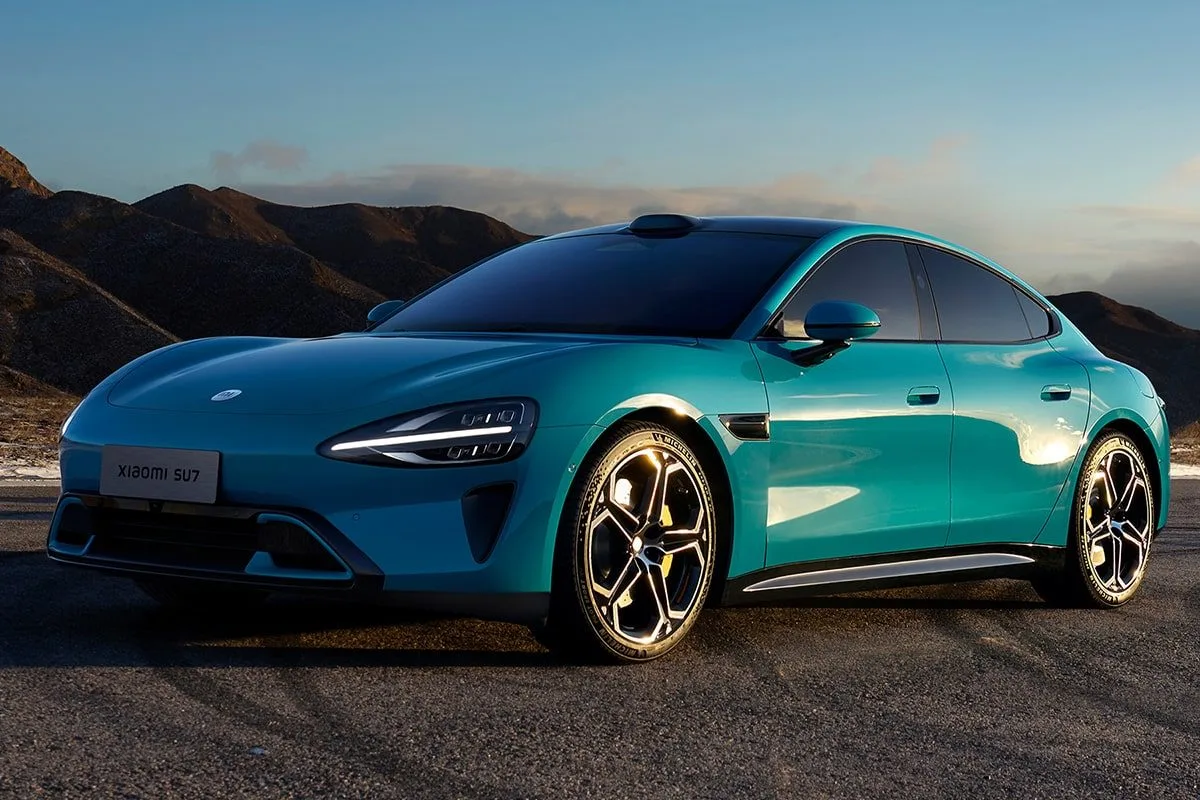
The manufacturer also wants to show off its qualities in the areas of connectivity, AI and autonomous driving in the saloon. The cockpit features a 16.1-inch central screen and a 7.1-inch instrument panel, among other things. Two additional screens, so-called Xiaomi tablets called Mi Pads, are available for passengers in the rear seat. Other built-in features include a Qualcomm Snapdragon 8295 chip, two Nvidia Orin-X chips with 508 TOPs of computing power, a lidar, three millimetre-wave radars, eleven HD cameras and twelve ultrasonic radars.
It was already clear in the summer that the start of production was approaching: in August, the Chinese smartphone manufacturer received the so-called ‘NDRC authorisation’ for producing electric cars. According to information from Reuters at the time, Xiaomi recently completed the construction of its factory in Beijing with an annual capacity of 200,000 electric cars. However, it is unclear whether the 200,000 mentioned is the initial or final expansion stage of the factory.
After much deliberation, Xiaomi made the decision to establish a subsidiary to operate the Group’s future smart electric vehicle business at the end of March 2021. At the time, Xiaomi announced its intention to invest a total of ten billion US dollars (around 8.5 billion euros) in the e-car business over the next ten years. According to earlier reports from Reuters, Xiaomi launched its subsidiary called Xiaomi Automobile Technology with a share capital of one billion yuan (just under 140 million euros). The CEO of the new company is Lei Jun, the company founder and overall CEO of Xiaomi.
According to Lei Jun, Xiaomi has now also set up its own production facility for battery packs and invested two years in the development of the 800 V battery pack with CATL. Xiaomi also uses a so-called gigapress in vehicle production to manufacture the underbody of the saloon largely from a single mould. Although Xiaomi was able to obtain its own production licence, the vehicle is being built in partnership with BAIC. According to the MIIT publication from November, the manufacturer is BAIC Off-Road Vehicle. Chinese media reported in parallel that although production will take place in Xiaomi’s own factory, it will be carried out by qualified workers from BAIC – in other words, Xiaomi is borrowing the staff.
The prices of the Xiaomi SU7 have not yet been announced and are to be published for the market launch in a few months. Chinese media anticipate a base price of around 300,000 yuan (approx. 38,500 euros). The “CN EV Post” portal also writes that although the SU7 is aimed at the mainstream market for electric cars in the mid to upper price segment, the company boss frequently compared the model with luxury models such as the Porsche Taycan Turbo and the Tesla Model S during the three-hour technology presentation.
At the beginning of the presentation, Lei Jun is also said to have set the goal of Xiaomi becoming one of the five largest car manufacturers in the world in 15 to 20 years.

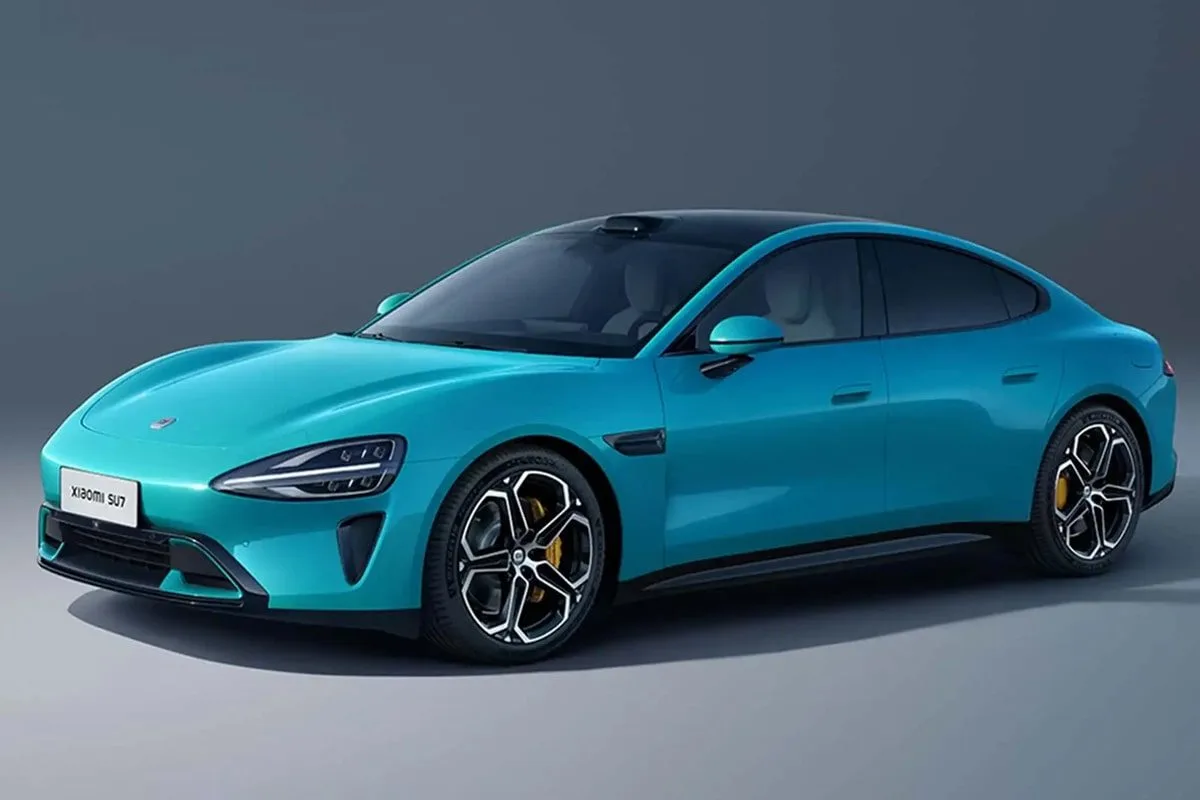



0 Comments